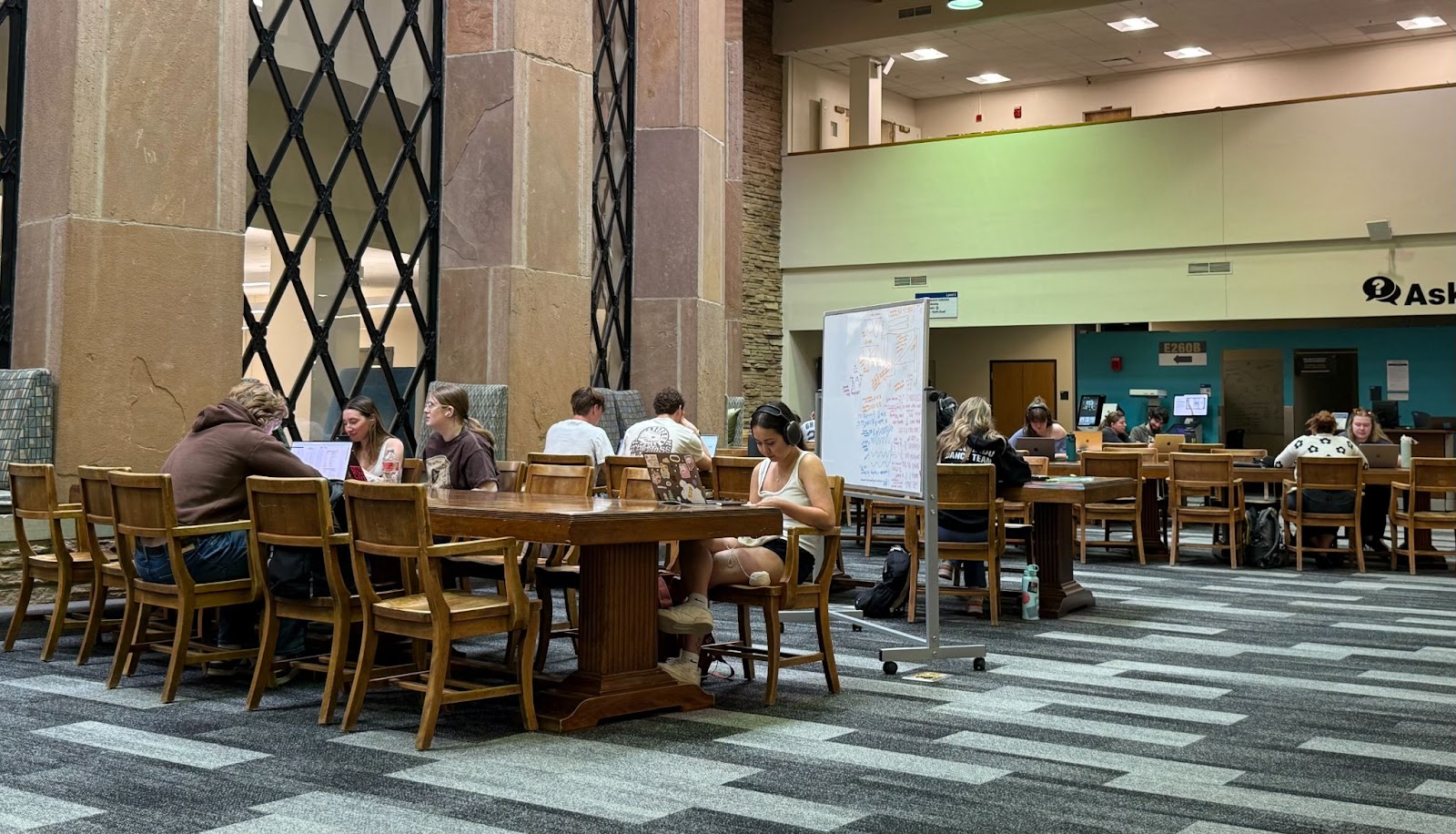By Rian Korb

Students working in Norlin Library at the University of Colorado Boulder on April 10, 2025. (Rian Korb/Radio 1190)
The teacher shortage in the United States has been going on for more than a decade, with events such as the COVID-19 pandemic having only exacerbated the issue further.
According to data obtained from the Bureau of Labor Statistics Job Openings and Labor Turnover Survey (JOLTS), the number of job openings for educators started to outnumber the number of educators being hired towards the start of 2018. This resulted in the Colorado Department of Education (CDE) requiring school districts and Boards of Cooperative Educational Services (BOCES) to take the annual Educator Shortage Survey.
There are a multitude of contributors to the teacher shortage, such as a lack of qualified people willing to do the job and low salaries to name a few. These problems have resulted in the issue becoming more complicated and nuanced as time goes on. Furthermore, the problem is also a nationwide concern.
“It’s happening all over the United States,” said Ashley Cartun, Director and Professor of Teacher Education at the University of Colorado Boulder, “and we feel it acutely in Colorado, where our rural communities are feeling the greatest impact of the shortage.”
The CDE reported in their 2018-2019 Educator Shortage Survey that in rural districts with smaller student populations there were 392 teacher positions to hire. 206 of those positions – 52.55% – were filled by shortage mechanisms, such as long-term substitutes. 2.3% of those positions went unfilled for the entire school year. Taking those numbers and comparing them to data collected from the CDE’s 2022-2023 Educator Shortage Survey, small rural areas reported having 535 teaching positions to hire, a 36.4% increase. Of those, 367 or 68.67% were filled by shortage mechanisms, a 78.2% increase. Small rural areas saw 16.67% of teacher positions to hire remain unfilled for the entire school year.
However, certain legislative measures have shown some success in addressing the lack of educators. One of the ways Colorado is attempting to combat the shortage is through House Bill 25-1037. Introduced on January 8th, 2025, the bill proposes a refundable state income tax credit for teachers. The tax credit will help to balance out the expenses teachers accrue from field trips, buying supplies and other items that help “improve the quality of the educational services they provide.” The bill specifies that the tax credit will only be applicable during income tax years before January 1, 2027, and is currently under consideration.
House Bill 22-1220 was passed back in 2022, meant to remove barriers to educator preparation and provide support to aspiring teachers who are entering the workforce.
The Student Educator Stipend Program was created with the purpose of providing an eligible student with the money they need to “reduce the financial barriers for students entering the educator workforce” according to the Colorado General Assembly. This is done through the transfer of $4,197,000 from the state education fund to the Department of Education.
As reported by the Colorado Department of Higher Education (CDHE), the Educator Test Stipend Program awards money to approved preparatory programs that students go through to become licensed teachers. Finally, the Temporary Educator Loan Forgiveness Program pays the qualified loans of an educator who is hired for a hard-to-staff educator position. According to the CDHE, the program was expanded by House Bill 23-1001 which allowed applicants to be principals or special service providers in addition to teachers. Currently the program is closed and no longer accepting applications.
But while these measures have shown some tentative signs of success, they haven’t been able to mitigate the crisis entirely. The teacher shortage is becoming more dire with every day that passes and it will continue to get worse until these fundamental issues are cut off at the root.
